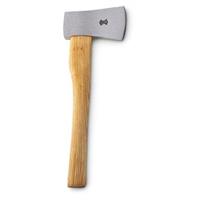- Joined
- Jan 21, 2020
- Messages
- 551
Yes, but... those steels require maintenance. Humidity will make it dull, not just rusty. Stainless will not be affected with it. Better to always have a handy cutter than to always think of maintenance. And those figures are over the top so irrelevant.AEN-L is 40ft-lbs, 8670 is 50ft-lbs.
I’d call that a SIGNIFICANT difference, (like about 20%).
(Not that there’s anything wrong with stainless…)

